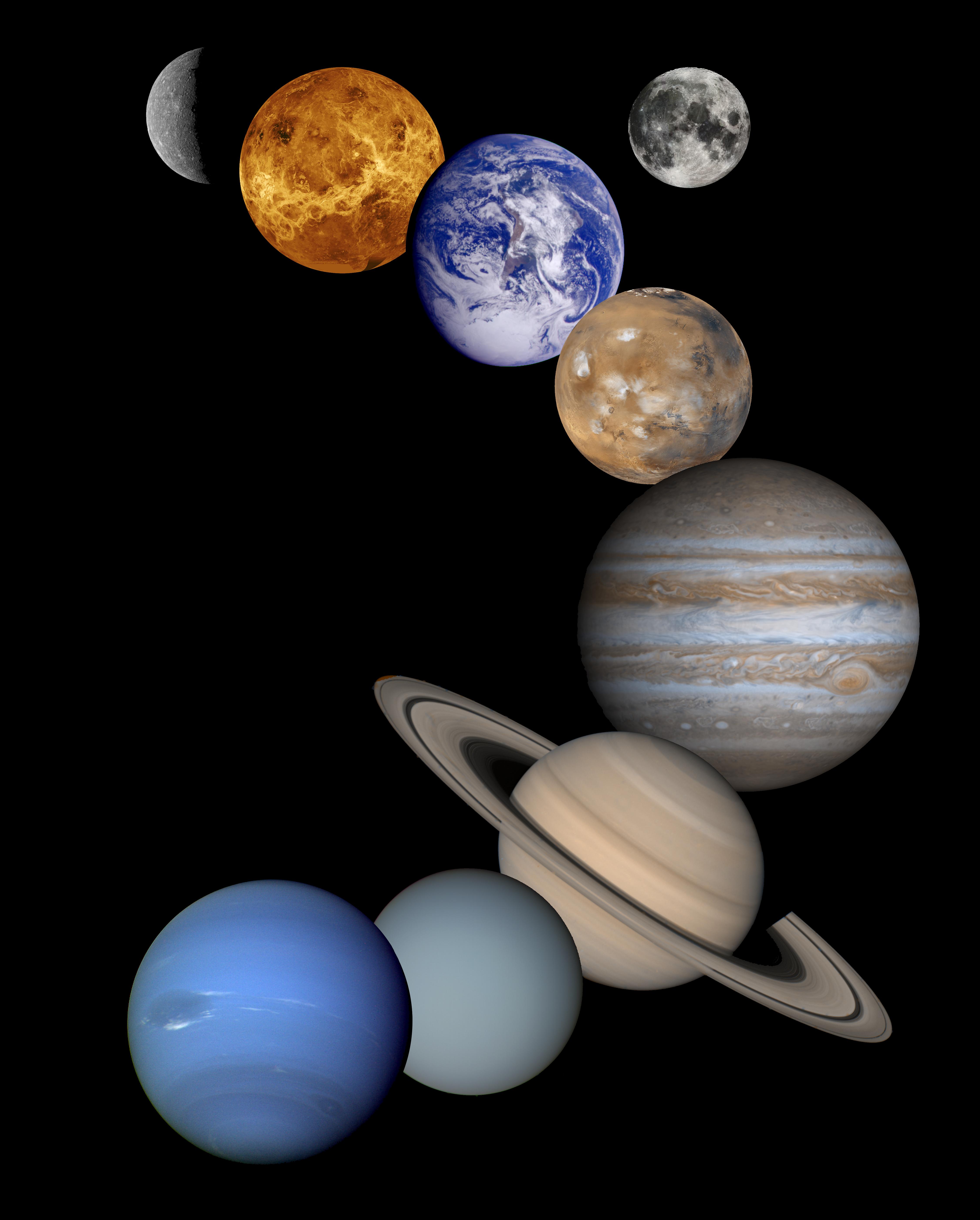What if other planetary bodies orbited our world at the same distance as the moon? How large would they appear on the sky?
Here's an animation Brad Goodspeed did to make you feel small.
The basic idea is, each planet you see is the size it would appear in the sky if it shared an orbit with the moon, 380,000 kms from earth. This video is created in After Effects.
Solar System Montage
 |
| Image by NASA |
This is a montage of planetary images taken by spacecraft managed by the Jet Propulsion Laboratory in Pasadena, CA. Included are (from top to bottom) images of Mercury, Venus, Earth (and Moon), Mars, Jupiter, Saturn, Uranus and Neptune. The spacecraft responsible for these images are as follows:
- the Mercury image was taken by Mariner 10,
- the Venus image by Magellan,
- the Earth and Moon images by Galileo,
- the Mars image by Mars Global Surveyor,
- the Jupiter image by Cassini, and
- the Saturn, Uranus and Neptune images by Voyager.
- Pluto is not shown as no spacecraft has yet visited it.
The inner planets (Mercury, Venus, Earth, Moon, and Mars) are roughly to scale to each other; the outer planets (Jupiter, Saturn, Uranus, and Neptune) are roughly to scale to each other.
...................................................................................................................................
No comments:
Post a Comment